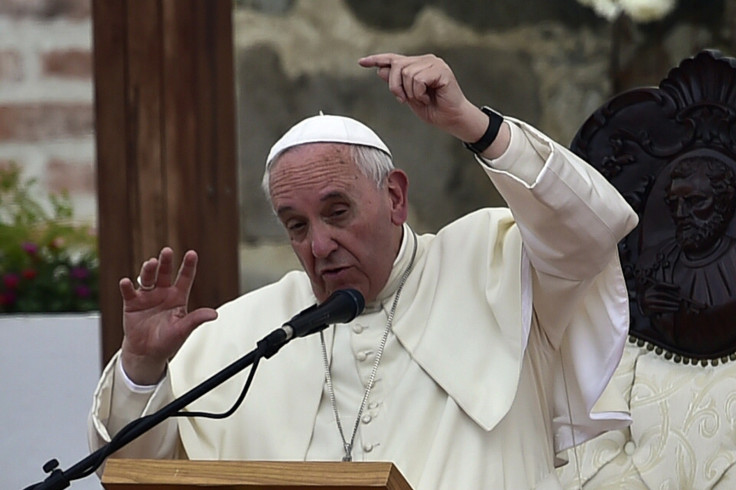The Papal Selfie and digital moments changing lives in Latin America

This week Pope Francis, a figurehead for millions and one of the most engaged world leaders in the digital space, began his three-country tour of Latin America. Millions are expected to turn out for his week-long visit to Ecuador, Bolivia and Paraguay. Many will be recording and sharing their experiences throughout on social media channels, with an intensity to which celebrity status must now become accustomed.
As a member of the appropriately named Twitterati, the Pope has 9.2m followers on his Spanish Twitter account alone, social media in the region has reached fever pitch in recent days. Stories that started to trend last weekend included rumours of the Pope's intention to chew coca leaves when in Bolivia, and the possible remarks he might – or might not – make on climate change.
It is hard to underestimate the Pope's popularity in the region. In a 2013 Gallup Poll across 18 countries, 70% of Latin Americans, including 82 percent of Catholics, said Pope Francis will bring positive changes to the Catholic Church. And if the visit is anything like his five-day visit in the Philippines earlier this year, where many of the country's 80 million Catholics turned out, it is sure to be one of the major social media events of the year.
As Pope-mania sweeps Latin America this week, what can big digital moments such as these tell us about the evolving digital lifestyles of people in Latin America?
Social media saturation
With the fastest growing internet population in the world, the region is undergoing a major shift in lifestyles, from the way information is shared to how big events (like the papal visit) are organised. Social media saturation in Latin America is huge and increasingly growing. An astounding 94.1% of Latin American internet users are on social networks, and five of the top 10 countries in the world for time spent on social networks come from the region.
The incredible take-up rate of smartphones in the region means that millions are expected to use Twitter to send messages welcoming the Holy Father and sending him their prayers. In Bolivia, Tigo has issued its own welcome hashtag #HolaFrancisco in readiness.
It remains to be seen if the Catholic Church in any of the Latin American countries will follow the example of the Philippines, who created a free smartphone application that allowed users to send prayer requests to the Pope, share photos and listen to music. I would expect that any such app would be downloaded thousands of times during the visit.
Papal selfie
Clearly we can expect to see the ever-popular selfie, as much a part of the digital lifestyle in Latin America as it is anywhere else, headlining in the social media space this week. Especially if ordinary bystanders are invited to take pictures with the Pope himself; one strategy that has worked well for the Catholic Church as the institution embraces its move into a more modern, informal and digital age.
The rise of digital moments such as these points to a much wider trend taking place in Latin America, which has been driven largely by the adoption of smartphones (faster than take-up rates in China) and the move to a more digital-first lifestyle.
My own view is that Latin American Millennials (LAMs) are at the forefront of this movement. They are optimistic about the future and the difference they can make. Young people I talk to believe they can make a positive difference in their countries and they are doing it through smartphones, social media, and sharing information with each other.
Whether it is a papal visit, a major online awareness campaign for universal issues such as the fight against cancer or a sporting victory, big digital moments are fundamentally reshaping Latin American lifestyles. Smartphones and mobile internet usage is helping us reimagine what we thought was possible. The future is digital: I say amen to that.
Mario Zanotti is Senior Executive Vice President of Millicom, Latin America
© Copyright IBTimes 2025. All rights reserved.





















